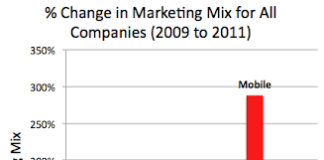I just joined Facebook — as if I didn’t have enough social networking applications to juggle! Although I have complained before about not having time to engage in all this Web 2.0 stuff (see “Social Media Marketing Not All It’s Cracked Up to Be“), I am glad that I joined Facebook because I am getting re-introduced to some old friends and discussions among them taking place exclusively via Facebook.
 While re-uniting with some friends from the Internet Healthcare Coalition, I came across a discussion started by Bruce Grant (that’s his facebook avatar on the left; nice way to make yourself look a lot younger Bruce!).
While re-uniting with some friends from the Internet Healthcare Coalition, I came across a discussion started by Bruce Grant (that’s his facebook avatar on the left; nice way to make yourself look a lot younger Bruce!).
Bruce posted a link to Rich Meyer’s blog post about P&G launching a new product using social media channels, aka “buzz and blogs” (see “P&G launching new product with social media” and “P&G Taps Bloggers, Moms for Unconventional Product Launch“).
Both Bruce and Rich wondered why pharmaceutical DTC (direct-to-consumer) marketers don’t do what P&G is doing. To which Rich replied: “We’re afraid- Too many DTC marketers hide behind the ‘we’re a regulated industry’ excuse and that is a load of manure. There are ways to reach out to customers and patients if you are willing to take a risk and be a leader.”
Keep in mind that the new P&G product is a once-weekly cleaning paste for your teeth, which is about ten orders of magnitude LESS important to humanity than any Rx drug marketed to consumers! And it breaks MACK”S RULE #1 FOR SOCIAL MARKETING:
Make sure the product is socially worthy because social marketing wastes a lot of peoples’ precious time!
But let’s put the lack of social significance of this product aside and focus instead on the social marketing.
In a Facebook comment to Bruce’s query, I noted that the pharmaceutical industry already does this kind of “buzz” marketing, but with physicians!
One aspect of P&G’s “buzz” campaign seems focused on a relatively small group of consumers who were probably profiled as consumer “thought leaders” — people who can influence other people. P&G sent out a survey to these people and also sent “samples” to influential bloggers.
Isn’t that exactly what pharma marketers do with physicians?
Even before a drug is launched, pharma marketers identify physician thought leaders and recruit them by hiring them as consultants or researchers (who have early access to the product). Their job is to start “buzz” in the physician community about the drug.
Then, when the product is launched, pharma sales reps go out and target “high prescribers” first so that there is a quick uptick in new prescriptions, which the company can cite as evidence of efficacy to other physicians.
Of course, pharmaceutical companies also seed thought leaders and high prescribers with “samples” (BTW, have you taken my survey about drug sampling practices? Do patients benefit from free drug samples? Physicians? Do samples promote only high-cost drugs? Should free samples be banned? Take the survey here.)
About the only thing pharma marketers don’t do that is similar to what P&G does is reach out to physician bloggers and for good reasons: there are very few of these, most of them are anti-pharma anyway, and there is no need to do it because pharma can send out a real person to visit physicians and this person becomes the physician’s friend (see “‘Friendly’ Pharma Sales Reps Earn More Bucks with Fewer Sales Calls!“). Which is much more powerful than sending samples to consumers, even influential consumers, via the US postal service!
Compared to the amount of money P&G is WASTING doing buzz marketing to consumers, physician “buzz” marketing by drug companies is incredibly efficient; ie, has a high return on investment.
Keep in mind that DTC pharma marketing still plays second fiddle to direct-to-physician marketing. If P&G had to sell its product only through dentists, I am sure they would ignore buzz marketing to consumers just as pharma does.









![6 Digital Tools at the Center of Healthcare Digitalization [INFOGRAPHIC]](http://ec2-54-175-84-28.compute-1.amazonaws.com/pharma-mkting.com/wp-content/uploads/2021/04/6DigitalTools_600px-100x70.jpg)




